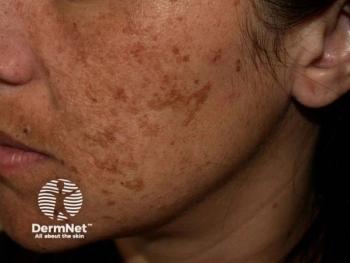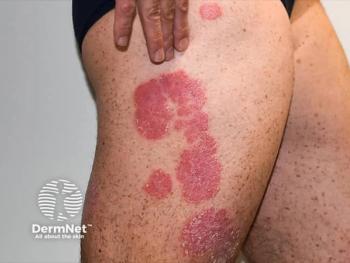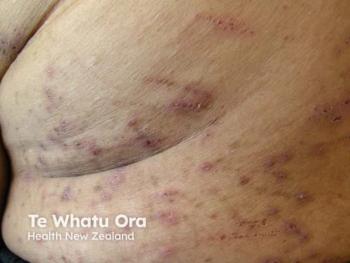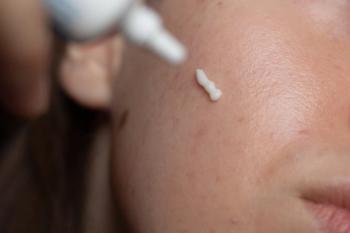
- Dermatology Times, June 2025 (Vol. 46. No. 06)
- Volume 46
- Issue 06
Larry Eichenfield, MD: Safety, Convenience, and Future Role of Icotrokinra in Treating Adolescent Psoriasis
Eichenfield discusses safety, lab monitoring, and treatment positioning of icotrokinra in adolescents with moderate to severe plaque psoriasis.
In a continued conversation with Dermatology Times, Lawrence (Larry) Eichenfield, MD, vice chair of dermatology and professor of dermatology and pediatrics at the University of California, San Diego, expanded on the pivotal ICONIC-LEAD phase 3 study and what the emerging data on icotrokinra (JNJ-2113)1 may mean for the future of adolescent plaque psoriasis management.
Eichenfield previously discussed the high rates of skin clearance and the favorable safety profile of icotrokinra, an investigational oral IL-23 receptor antagonist peptide.
In this second part of the interview, he shifts focus to the practicalities of treatment, including its safety monitoring, integration into shared decision-making with families, and how this new class of therapy might complement or compares with conventional options.
Minimal Lab Monitoring May Be Needed
One key differentiator of icotrokinra, beyond its novel oral formulation and biologic-like mechanism, is the potential simplicity of its safety monitoring. While full prescribing guidance is pending regulatory review, early signals suggest the treatment may not require the rigorous lab work that often accompanies systemic therapies.
“We don't know yet what the labeling will include,” Eichenfield said. “But there weren’t significant laboratory abnormalities observed in the trial, so it’s not intuitive that baseline or serial blood work would be required like with some other treatments.”
For clinicians and patients alike, this could reduce the logistical burden often tied to systemic psoriasis therapy, especially in younger patients.
“The safety profile to date within the studies hasn't shown a significant immunosuppressive effect where we expect higher rates of serious infections,” he added. “But, of course, we’ll see this plays out over time.”
A New Conversation With Teens and Parents
Eichenfield emphasized that icotrokinra could offer a new kind of treatment conversation where clinicians work closely with adolescents and their families. He described how current treatment discussions often involve a mix of topicals, older systemics like methotrexate or cyclosporine, and injectable biologics, each with their own set of complexities.
“I can imagine having discussions with my teens and their parents, like we do now," he said, "listing the different possibilities of topical therapies, some of our new topical therapies, traditional systemic, not modern, advanced, which we often move away from unless we're forced to use that first."
He also noted that while a new oral option does not eliminate the need for biologics or other treatments, it adds flexibility to the care continuum, especially for families seeking options that align with the adolescent’s lifestyle or aversion to needles.
Icotrokinra in Context: Current and Emerging Systemic Options
Icotrokinra’s entry into the field, according to Eichenfield, may broaden the scope of oral therapies for psoriatic disease, especially because it builds on a well-established mechanism of action in psoriasis (IL-23 inhibition) while offering the convenience of once-daily oral dosing.
Importantly, the ICONIC-LEAD study is the first phase 3 trial to evaluate a systemic psoriasis therapy simultaneously in adolescents and adults, setting a new precedent for pediatric dermatology research.
“It's really exciting that we'll get this incredible medicine, hopefully, from a regulatory standpoint, approved, and that the teens won't be left behind, but will be right there with the adults having access to the new therapy," Eichenfield said.
Clinical Considerations for the Future
When asked how he foresees the adoption of icotrokinra into clinical practice, Eichenfield pointed to its likely role as part of a broader treatment dialogue, especially for patients who may be needle-averse, traveling frequently, or otherwise looking for more autonomy in their care.
“Adherence is an issue in all patients, but with teen patients in particular," he said. "But in my experience, when it comes to systemic therapy for diseases that have such an incredible impact on the life of the individual, it doesn't take that much cheerleading to get them to use their medicine appropriately regularly.”
Reference
- Icotrokinra results show 75% of adolescents with plaque psoriasis achieved completely clear skin and demonstrate favorable safety profile in a once daily pill. News release. Johnson & Johnson. April 10, 2025. Accessed April 17, 2025.
https://www.jnj.com/media-center/press-releases/icotrokinra-results-show-75-of-adolescents-with-plaque-psoriasis-achieved-completely-clear-skin-and-demonstrate-favorable-safety-profile-in-a-once-daily-pill
Articles in this issue
6 months ago
Dermatology Times June 2025 Print Recap6 months ago
Nail Trends That Challenge Clinical Diagnosis6 months ago
Inside IL-17 Inhibitors Advancing Psoriasis CareNewsletter
Like what you’re reading? Subscribe to Dermatology Times for weekly updates on therapies, innovations, and real-world practice tips.


















